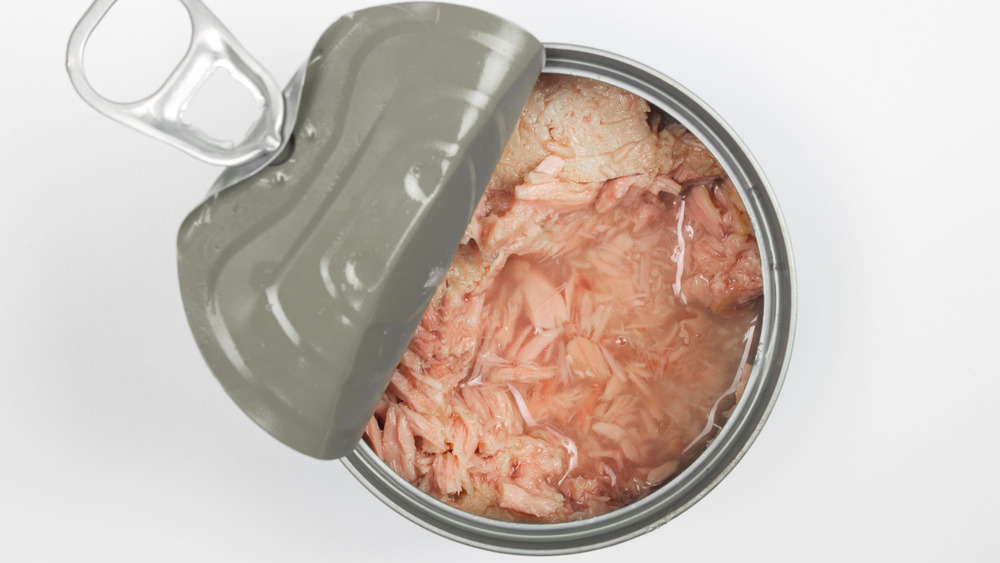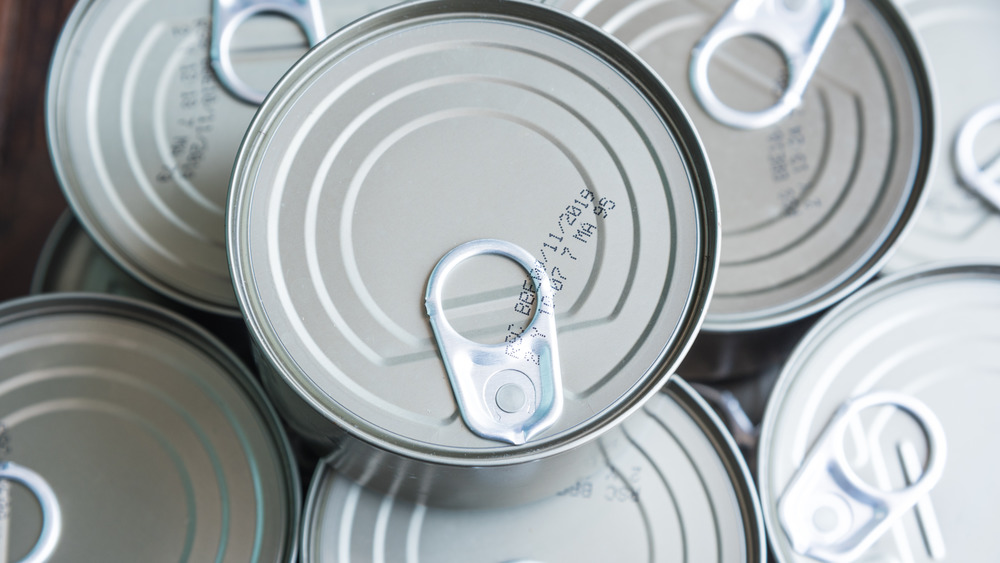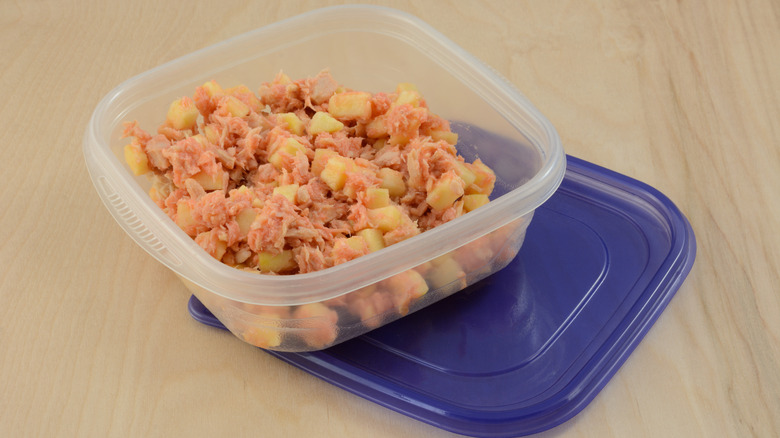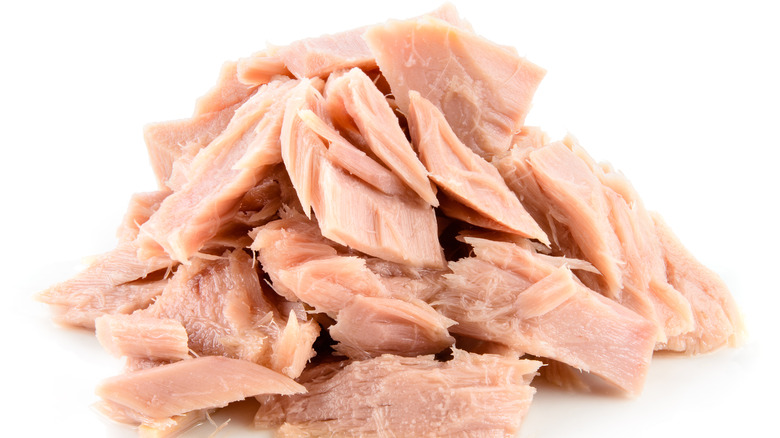You've Been Storing Canned Tuna All Wrong
Canned food is great to keep on hand for those days when you're running low on groceries and can't get to the store. One of the most common canned foods you'll find in many people's homes is canned tuna. It's packed with healthy protein and makes for a delicious, easy lunch when you're in a pinch (tuna salad sandwich, anyone?).
People love canned tuna so much that study done in 2009 by the National Fisheries Institute reported that 56% of Americans surveyed keep three or more pouches of tuna at home at any given time, with 25 percent admitting they keep five or more. That's a lot of fish! If you're someone who likes to have a can or two (or three or five) in your kitchen, take note: You may not be storing it properly. Here's where you should be keeping your cans of tuna from this point forward.
Canned tuna needs to be cool, but not too cool
First things first: You should absolutely keep your cans of tuna away from heat (i.e. don't put canned tuna in the cabinet above the stove or in direct sunlight). Heat will cause your tuna to spoil much quicker and could make it unsafe to eat. Now that we've got that out of the way, where should you store your tuna? Many food sites, including the The Spruce Eats, recommend keeping canned tuna in a cool, dark cabinet, like the pantry or any cupboard that's away from heat sources and that has a closing door. It isn't necessary to refrigerate unopened cans of tuna.
The National Fisheries Institute says the best temperature for storing canned tuna is room temperature. The institution also suggests keeping your cans up on shelves (not on the floor) to prevent them from leaking and potentially rusting or spoiling and also so they don't get crushed or dented. It's also a smart idea to put older cans in the front with newer purchased cans behind them so you use up the older tuna first. Note that the USDA says that low-acid canned foods, which includes tuna, should last for two to five years if stored properly.
Transfer it to a new container after opening
The rules for unopened cans of tuna do not apply to opened cans. Once you open a can of tuna, you absolutely should keep it in the refrigerator. Eat Right suggests transferring your fish to a plastic bag or container before placing it in the fridge, where it will stay fresh for one to two days.
People have previously been concerned that you shouldn't leave food in an open can because potentially harmful chemicals from the metal could leach into your food. However, according to Epicurious, that's not the case. The outlet reports that "can corrosion" takes years, so it's likely not a valid fear. That said, there is a real reason to transfer your tuna to a different container. "It's more about maintaining the quality and taste like you would for any other food you prepare," Katie Toulouse, communications manager at the Canned Food Alliance, told Epicurious.
The USDA's Food Safety and Inspection Service recommends covering your leftover food tightly or placing it in an airtight container — with a proper fitting lid — to help prevent bacteria growth and keep out any other odors or flavors in your fridge from seeping into your tuna.
Check that your canned tuna hasn't gone bad
Canned tuna is one of those things that seems like it will never go bad — but trust us, it does. When you go to open a new can, your first step should be to check the expiration date. If you're still within the recommended "eat by" date, you may proceed, but don't dig in just yet. There are a few other things you should check to ensure your canned tuna is still safe to eat. Before you even open your can, check the outside. The National Fisheries Institute cautions that if a can is rusted, dented, leaking, or misshapen in any way, it could be a sign that the tuna has spoiled. Foods Guy explains that canned food lasts so long because it's pressure sealed inside the can. If there's any damage to the can, the tuna may not have been preserved properly, which makes it potentially unsafe.
Once you open the can, you should check for any noticeably strong odors, Food Gear says. You should also look at the color. Tuna that's still edible should be light pink to brown. If it's green or has streaks of dark brown or black, toss it in the trash — chances are, it's not okay to consume.



